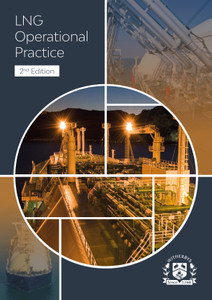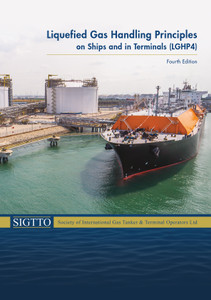
This pocketbook provides easy to understand safety guidance that should be followed by all personnel serving on board liquefied gas carriers. It describes the hazards associated with liquefied gas products and sets out essential safeguards to protect life, the environment and the cargo being carried.
This publication highlights the hazards that may be encountered on board a liquefied gas carrier, such as toxicity, flammability, enclosed spaces and cargo spillage. It examines how these risks may be managed and provides guidance on personal protective equipment (PPE), emergency response and pollution prevention. It also outlines safety management systems (SMS), permits to work (PTW) and safety inspections.
This book contains important advice and guidance for your safety while serving on board liquefied gas carriers. It explains the hazards associated with the variety of products that may be carried on board and addresses the steps needed to protect yourself, the environment, your colleagues and the cargo carried.
Most liquefied gases are hydrocarbons and the main property that makes hydrocarbons the world’s primary energy source – combustibility – also makes them hazardous. Because these products are handled in large quantities, it is necessary to minimise leakage and control all sources of ignition.
Gas carriers are robustly designed and constructed and the majority of hazards are minimised by strict compliance with the design requirements of the International Maritime Organization (IMO) and other organisations. Gas carriers are inspected regularly throughout the world to ensure that the requirements of the IMO rules continue to be met.
You are not expected to be fully conversant with all of the rules – but you are expected to take care, avoid risks and follow instructions.
This booklet has been produced to assist you, warn you of hazards that may exist and give guidance on how the risks may be effectively managed.
1. Introduction
2. Carriage of Liquefied Gases by Sea
How Are They Carried?
Where Do the Products Come From?
Types of Liquefied Gas Carrier
LNG Carriers
LPG Carriers
3. Hazards and Risks of Liquefied Gas Cargoes
Further Information
For Officers Who Are Undergoing Onboard Training
Cargo Health and Safety Information
The Presence of Gas
Sources of Ignition
Liquid Spills
Chemical Burns
Low Temperatures
Frostbite
Structural Damage
4. Flammability
5. Toxicity
Precautions During Cargo Operations
6. Enclosed Spaces
7. Basic Firefighting
The ‘Fire Triangle’
8. Pollution Prevention
9. Emergency Procedures
10. Safety Systems
Safety Management Systems (SMS)
Risk Assessments
Permit to Work Systems (PTW)
11. Safety Inspections
12. Personal Safety
Induction
Familiarisation
The Safety Officer
13. Definitions and Descriptions
SIGTTO
The Society of International Gas Tanker and Terminal Operators (SIGTTO) is an international body established for the exchange of technical information and experience, between members of the industry, to enhance the safety and operational reliability of gas tankers and terminals. Learn more: https://www.sigtto.org/about-us/
- Number of Pages:
- 44
- ISBN:
- 9781856095723
- Binding Format:
- Paperback
- Book Height:
- 180 mm
- Book Width:
- 120 mm
- Weight:
- 0.2 kg
- Author:
SIGTTO
- Published Date:
- December 2012
- Preview:
- Yes
- Publication Date:
- January 2013





